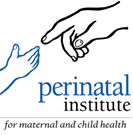


|

|



| E1 INTERGROWTH 21st |
The Perinatal Institute gets occasional enquiries about the INTERGROWTH 21st standards for birthweight and fetal weight. We advise against their use as they can cause harm, because they
We are not aware of any published evidence that either the fetal weight or the birthweight standards by Intergrowth has shown any significant benefit in terms of identification of adverse pregnancy outcome. In contrast, GROW charts have been validated in a number of studies referenced in a recent review (AJOG 2018). The head-to-head comparisons with Intergrowth to date are listed here and all favour GROW. However we would be pleased to hear about any evidence to the contrary - please write to GAP Team. |
| E2 K2 / Athena Maternity System ‘Customised Charts’ |
| We have been asked by NHS users of K2 Maternity Systems to look at the charts incorporated by K2 into their Athena Maternity System, which they claim to be equivalent to the Perinatal Institute’s customised charts. Our GAP and statistical teams have undertaken an analysis of these charts. They have concluded that these charts cannot be recommended for clinical use as they are untested and unvalidated, and are likely to produce the wrong cut-offs for the identification of babies at risk, with potentially severe clinical consequences. For a detailed analysis, please see here |
| E3 We have implemented GROW and use customised centiles to assess whether the birthweight is SGA. However our neonatologists use the WHO standard to screen for SGA as a risk factor for hypoglycaemia. The two assessments are often out of sync. Which one should we use? |
The UK-WHO standard, as used in the parent held Red Book for neonates, is an internationally derived population reference which does not adjust for individual constitutional factors that affect the normal range of birthweight, as recommended by the RCOG. Various studies have shown that a customised standard is better in defining babies at risk of perinatal mortality and morbidity [1-5]. A recently completed comparative analysis with the UK-WHO standard (to be submitted for publication) has shown that the customised GROW standard identifies a third more cases that are at significantly increased risk of low Apgar scores, admissions to the neonatal unit, and perinatal mortality.
|
| E4 What standard for birthweight should be used for babies assessed in the Perinatal Mortality Review Tool (PMRT)? |
| MBRRACE have recently recommended the use of their TIMMS birthweight centile calculator based on the birthweight curves by Norris et al [1]. We examined this standard and advise against its use as 1. it is not customised, contrary to RCOG guidelines [2], and 2. it applies a neonatal (instead of fetal) weight standard to preterm births which results in substantial underestimation of SGA at preterm gestations. For further details please see our analysis here: https://bit.ly/2KV1fyM As a general rule, it is also important that the same standard is used to assess adverse outcome as that which was applied in antenatal care. For units using GROW for assessment of fetal growth and birthweight, the same standard should be used when assessing outcome. The birthweight centile can be either calculated postnatally in the GROW App, or with the customised centile calculator https://icc.growservice.org/754731/
|